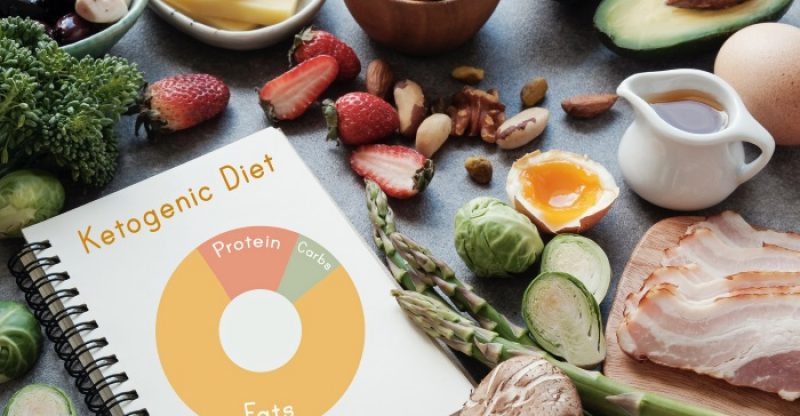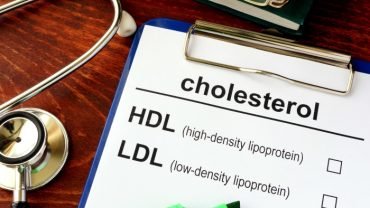Keto Diet Plan Explained and Best vs Worst Foods List
While some fad diets create a momentary buzz and disappear or are based on a lack of understanding of science and nutrition, the ketogenic diet, or keto diet, has been around for nearly 100 years.
Ketogenic diets are founded on a firm understanding of nutritional science and how the human body works, and tens of thousands have followed this diet to ensure good health and proper nutrition.
Our guide helps you understand what the ketogenic diet is, what foods are keto-friendly, and how to modify the ketogenic diet for various reasons.
If you are interested in controlling your blood sugar, helping your hormones be more balanced, fighting insulin resistance, and feeling healthy and strong through proper nutrition, the keto diet is for you.
What is Ketogenic Diet
Your body utilizes two main sources of fuel to create energy.
Most people focus on burning carbohydrates for energy, but those who follow a ketogenic diet, which is low in carbohydrates but higher in fat, instead burn fat as their main fuel source.
The ketogenic diet supports weight loss by providing consistent energy, which helps you maintain willpower and stay on track.
With the keto diet, you don’t have to worry about counting calories or limiting your portion sizes, either.
Instead, you’ll eat plenty of nutrient-rich, healthy foods whenever you want.
Ketogenic diets are not just good for helping some people to lose weight.
In recent years, scientists have begun to examine the benefits of this type of diet in treating many different disorders, including diabetes, PCOS (polycystic ovary syndrome), neurological diseases, acne, and cancer.
In addition, ketogenic diets are used to help treat patients with respiratory and cardiovascular disease risk factors (1).
By placing your body in ketosis, which means you are burning fat rather than sugar, you are changing the way your body processes food into energy.
The simple steps for placing your body into ketosis are:
- Cut back on all carbs.
- Eat more healthy fats.
That’s it! Now, your body will switch from relying on glucose, which it no longer has because carbs have been restricted from your diet to burning fat as an energy source.
Many who enter ketosis and follow a ketogenic eating plan are able to reduce their weight and feel healthier quickly.
In addition to cutting carbs and eating healthy fats, there are other important steps you can take to help your ketogenic diet be more effective.
The first is to stop worrying about your fat intake.
Many who have tried other diet plans or eating strategies in the past are used to watching their fat intake.
With ketogenic eating, though, fat is your friend.
Because it is the primary source of energy, you want to make sure you are getting enough of the healthy fats your body needs.
Drinking lots of water helps your body metabolize the fats and proteins better, regulates your bodily functions, and keeps you feeling energetic throughout the day.
Giving up snacks will make your insulin levels stay more consistent so that weight loss will be easier.
Ketosis can also be triggered or boosted by fasting, so using intermittent fasts as a part of your weight-loss plan can be useful.
Don’t forget the importance of activity, and build exercise into your plans for a healthier lifestyle.
Ketogenic Diet Foods
Knowing which foods are and are not appropriate for a ketogenic diet is critical for entering and staying in ketosis.
First, let’s look at the general guidelines for ketogenic diets, so you’ll begin to understand what comprises the majority of your meals while eating for ketosis.
Ketogenic meals will contain large amounts of healthy fats from sources like nuts, seeds, coconut oil, olive oil, and grass-fed butter.
Because fats are a vital component of any ketogenic eating plan, they comprise as much as 80 percent of your total calories.
These fats are used by your body as fuel, and they help stave off hunger and fatigue.
You will also eat large amounts of non-starchy vegetables, such as broccoli, asparagus, leafy greens, zucchini, cucumber, and much more.
These will provide you with essential nutrients, plenty of fiber, and lots of energy, as well.
You will still need protein, but in smaller amounts than you probably normally consume.
Moderate intake of low-carb, high-protein sources such as eggs, wild-caught fish, organic and free-range poultry and beef, and a small amount of full-fat dairy are included in ketogenic eating.
You may have already noticed that this eating plan is based on eating whole foods.
You will not be consuming processed foods, foods high in sugar or refined grains, starchy foods such as baked goods, or anything else that is high in carbohydrates.
When you first start following a ketogenic diet, it can be difficult to discern exactly what is and is not appropriate for keeping your body in ketosis.
Remember that you want the bulk of your calories to come from healthy sources of fat, with small amounts of protein.
Strictly restricting any sources of carbohydrates will be key, and this includes even healthy sources of carbs, like whole grains.
Doing so keeps your body in that constant state of ketosis, and begins the process of burning fats rather than carbs for energy.
Cooking for yourself is very important in ketogenic eating, as even so-called ketogenic products may not be the best choices for your health.
Learning to select and prepare fresh, whole foods that are high in fat and low in carbohydrates will help you develop the healthy eating habits that will carry you into the next, healthier years of your life.
Rather than just looking for low-carb recipes, be sure you are looking for dishes specially formulated to be ketogenic.
You will have more energy when you follow ketogenic meal plans because, without the healthy fats, you will lack needed energy when you reduce your carbohydrate intake.
Ketogenic Diet Overview
In order to know what your intake of fat, protein, and carbohydrates should be, you will need to consider both your current state of health, as well as your specific goals for changing your eating patterns.
Other important factors include your gender, age, activity level, and current BMI, which will all help determine how much fat and carbohydrates are optimal for you.
You will first need to understand the concept of net carbs.
Dietary fiber is healthy for you and necessary for proper digestion, and any fiber you eat does not count toward your carb total, because you do not digest it.
To determine your net carbs for any given food item, therefore, you subtract the grams of fiber from the total carbohydrates for that food, which yields the carbs actually available for energy.
In ketogenic eating, you are generally limited to no more than 30 net grams of carbs per day.
To help your body stay in ketosis, and burn fat instead of glucose for energy, you must adhere to the low-carb, high-fat approach to eating.
It is also important that you do not consume too much protein, as your body can actually transform protein into glucose.
This can bring you out of ketosis, so watching your protein intake is critical.
To determine how much protein you need, first, convert your weight into kilograms by dividing your goal weight by 2.2.
You need 1-1.5 grams of protein per kilogram of your ideal weight.
That means, if you want to weigh 150 pounds, which is 68 kilograms, you will need to consume between 68-102 grams of protein each day.
Staying hydrated by drinking plenty of water is also vital for your health.
Staying hydrated prevents fatigue, helps you feel fuller longer and aids your digestion.
Water flushes unwanted wastes and toxins from your body, as well.
You should drink at least 80 ounces of water each day.
If you are wanting to follow a strict or standard ketogenic diet, your daily intake should be made up of 70-80 percent healthy fats, 15-20 percent protein, and 5 percent net carbohydrates.
Others choose a more moderate version of ketogenic eating, which can help you transition to ketogenic eating, and also can allow for more flexibility.
This modified version will be discussed later.
Keto Foods to Eat Anytime
Healthy Fats
Healthy fats make up the bulk of your daily intake on a ketogenic diet plan.
Most healthy fats have no net carbohydrates.
In addition to providing energy, these healthy fats have other health benefits, as well.
You want to eat a variety of types of fats, including saturated, monounsaturated, and a few polyunsaturated fats like omega-3 fatty acids.
You will want to consume mostly saturated fats.
Excellent sources of healthy fats include:
- Cold-pressed coconut, olive, flaxseed, macadamia, or avocado oil, which are all medium-chain triglyceride, or MCT, oils.
- Butter, or ghee, which is clarified butter.
- Smaller amounts of animal fat like lard, duck fat, or chicken fat.
- Avocados can be eaten with care, as they contain about 4 grams of net carbs per one-half avocado.
Proteins
Most animal proteins, such as fish, poultry, and beef have few or no carbohydrates.
Consuming these in moderate portions can control hunger and add variety to your meals.
Fattier cuts of meat are better than lean ones for ketogenic eating.
Animal proteins with zero or trace net carbs include:
- All poultry, including chicken, turkey, pheasant, hen, duck, goose, and quail.
- Most fish, especially trout, bass, flounder, salmon, sardines, mackerel, and tuna.
- Grass-fed beef, goat, veal, lamb, venison, and most game meats. When selecting meat, opt for grass-fed options over conventionally-raised meats, as they are higher in omega-3 fatty acids.
Animal proteins with minimal carbs (less than three grams per five ounces) include:
- Organic and cage-free eggs.
- Organ meats like liver and kidneys.
The following foods can be part of a ketogenic diet plan.
These snacks can help you stave off cravings and provide you needed energy from fat.
- Hard-boiled eggs.
- Meat or fish jerky.
- Bone Broth.
Vegetables
Nearly all vegetables that grow above ground are good choices for ketogenic diets.
Vegetables with few or no net carbs per serving include:
- Leafy green vegetables such as spinach, chard, and kale, as well as salad greens like arugula, endive, escarole, radicchio, romaine, and sorrel. Other greens like collards, mustard, turnip, fennel, beet, and dandelion are also excellent choices.
- Fresh herbs.
Vegetables with under 7 grams of net carbs per serving include:
- Celery
- Zucchini
- Leeks and chives
- Cucumber
- Asparagus
- Mushrooms
- Bamboo shoots
- Bean sprouts
- Bell peppers
- Sugar snap peas
- Water chestnuts
- Radishes
- Jicama
- Green beans
- Wax beans
- Tomatoes
- Broccoli
- Cabbage
- Brussels sprouts
- Cauliflower
Condiments
Many condiments are keto-friendly, with few or no net carbs.
Good choices include:
- Hot sauce without sweetener
- Apple cider vinegar
- Unsweetened mustard
- All spices and herbs
Drinks
You want to stay hydrated while eating for ketosis.
Drink plenty of water.
If you are looking for other drink choices, good options include unsweetened black coffee or tea and bone broth.
Drink all caffeine in moderation, as this can impact energy and blood sugar.
Keto Foods to Eat Occasionally
Eating to support ketosis doesn’t mean depriving yourself of foods.
It just means knowing the moderate amount that is helpful to accomplishing your goals.
The following are generally okay if eaten in moderation while on a ketogenic diet.
Beans and Legumes
While many plant foods are excellent sources of protein, many are also higher in net carbs, so indulge in these only occasionally.
Legumes like lentils, chickpeas, and beans such as lima, kidney, and black beans average about 13 net grams of carbohydrates per serving.
Soy products contain protein as well, but each varies in the number of carbohydrates per serving, so read labels carefully.
Examples of soy products include edamame, tempeh, and tofu.
Soy products are generally lower in carbs than other legume or bean products.
Full-Fat Dairy
Because dairy contains natural sugars that are processed as carbohydrates, these should be eaten only occasionally.
Hard cheeses made from full-fat milk are usually lower in carbs, while soft cheeses and low-fat dairy generally have more sugars.
While full-fat milk from cows or goats may have as much as 12 net carbs per serving, full-fat cheeses may contain only one-half to one and one-half net grams per serving.
Some Starchy Vegetables
Some vegetables that contain more net carbs are okay to consume in moderation, especially when balanced with fat and protein intake.
For example, vegetables like beets, parsnips, carrots, okra, artichokes, and sweet peas have between seven and fourteen net carbs, which can be fine if your remaining daily intake is lower.
But other root vegetables like white potatoes, sweet potatoes, and yams are much higher in carbs, with as many as 25 net grams per serving.
Consuming these could result in significant blood sugar spikes if you are not careful.
Seeds and Nuts
Most seeds and nuts are good sources of proteins and healthy fats, but many are also higher in net carbs, so these should be eaten occasionally, as well.
While whole foods like pumpkin seeds, chestnuts, pistachios, sunflower seeds, cashews, walnuts, and almonds are lower in net carbs, cashews contain quite a bit more.
Nut and seed butters are also higher in net carbs.
Chia and flaxseed are generally low in net carbs, as you have to eat a lot to net even 2 grams.
Fruits
Some fruits balance out their sugar content with fiber, water, and other nutrients.
Eating berries, including blueberries, blackberries, raspberries, and strawberries, is acceptable in moderation.
Condiments
Always check labels on condiments, as many contain added sugar, and most have net carbs from natural sugars.
Condiments that can add flavor and variety to your foods include:
- Salsa
- Ketchup (with no added sugar)
- Sour cream
- Worcestershire sauce
- Lemon or lime juice
- Soy sauce
- Salad dressings with natural ingredients and no added sugars
- Pickles
Many of these are high in sodium, so watch your salt intake.
Stevia and erythritol are excellent natural sweeteners that will not raise your blood sugar.
Use in small amounts for best results.
Drinks
Most other beverages, besides water, coffee, and tea, contain some amount of sugar.
Whether natural or added, these sugars equal net carbs, so drink them sparingly.
Bouillon or broth is an excellent choice for maintaining electrolyte balance.
Unsweetened nut milks, such as almond or coconut, should be occasional treats.
Fresh fruit and vegetable juices are okay, as long as you drink less than eight ounces, and limit the fruit used to make any juice.
Keto Diet Foods to Avoid
Certain foods should always be avoided if you are trying to remain in ketosis.
These will provide your body with too much glucose, which means your body will stop burning fat.
Sugars
Just one teaspoon of sugar has four net carbs.
Avoid all types of sugar, including brown, confectioner’s, raw, white, and cane sugar.
Say no to any type of syrup, whether fruit, caramel, corn, maple, or carob.
Honey and agave, while natural, are also extremely high in sugar.
Read labels carefully, and avoid any foods that contain glucose, fructose, dextrose, maltose, or lactose.
These are all variations of sugar.
All Grains
Just one slice of bread can contain your entire day’s allotment of net carbs.
To keep your net carbs low, avoid all of these foods at all times:
- Bread;
- Pasta of any kind;
- All cereals, including oatmeal;
- Cooked grains, like quinoa, rice, couscous, faro, and wheat;
- All corn products, including polenta, tortillas, popcorn, and grits;
- Anything made with flour, including bagels, bread, muffins, pancakes, waffles, or rolls.
Processed Foods
Nearly all processed foods are high in net carbs, added sugars, and unhealthy amounts of other ingredients.
Avoid these at all costs:
- Candy;
- Desserts such as ice cream, pie, cake, or cookies;
- Crackers;
- Chips;
- Pretzels;
- Snack bars, such as granola or cereal bars;
- Meal replacement bars or shakes;
- Pre-packaged, boxed, or canned foods;
- Anything with artificial flavors, dyes, or sweeteners.
Sweetened Drinks
Ketogenic diets do not support drinking soda, alcohol of any kind, sweetened coffee or tea drinks, any sweetened milk substitute, or fruit juice.
Modified Keto Diet
If adjusting to the standard ketogenic diet is difficult for you, you can still enjoy many of the health and weight loss benefits by first starting with a modified keto diet, which is the moderate version of the standard.
This diet can also help with many of the health issues discussed previously, can promote weight loss, and also includes more flexibility in the foods you can eat.
Modified keto diets allow for slightly more carbohydrates, which means you can eat more fiber and have more variability in your diet.
The keto diet can feel restrictive at times and using a modified version, either occasionally or all the time, can help you stay with it for extended periods.
The modified version of the ketogenic diet calls for a maximum of 50 net grams of carbs each day, at least in the beginning.
This is more flexible and moderate than the standard diet, and it can allow you to transition to ketogenic eating without feeling deprived.
After you have transitioned and are feeling comfortable with this way of eating, you can then transition to the standard diet, if you wish, by cutting your carbs further to the 20 net grams per day allowed.
Everyone is different, and one version of this eating plan may work better for you and meet your health and wellness goals than the other, so stick with what is working best for you.
The modified keto diet still allows for considerably fewer net carbs than the standard American (or Western) diet, also known as the SAD diet.
Therefore, many experience dramatic weight loss even at this level of eating, so again, go with what works best for you.
Precautions for Keto Diets
When you first transition to the ketogenic diet, it is not unusual to experience some side effects and reactions due to the dramatic change in your eating.
These generally pass with time as your body adjusts to your new diet.
The keto flu, as it is known, affects each person differently, but some of the common reactions that usually resolve within a few weeks include:
- Fatigue;
- Headaches;
- Muscle spasms, especially in the legs;
- Muscle weakness;
- Trouble sleeping;
- Digestive problems, including nausea and constipation;
- Trouble focusing or feeling disoriented;
- Moodiness or irritability.
Most of these will disappear in time, but there are a few steps you can take to help alleviate these reactions.
To neutralize digestive issues, try to eat following alkaline diet principles.
Be sure you are taking in plenty of electrolytes, even if you are drinking lots of water.
Getting used to the keto diet will flush many essential nutrients from your system, so be sure to replenish them with bone broth and other electrolyte supplements.
Eating your healthy keto diet consistently will also help, as foods like mushrooms, fish, artichokes, spinach, greens, nuts, and avocados can all help replenish your electrolytes.
When you first start a ketogenic diet, you may want to cut back on your exercise temporarily while you adjust to new sources of energy.
Once you have stabilized your eating, you can add this back in.
If you are hungry, eat more fat.
Make sure you are drinking plenty of water and getting enough salt.
Avoid processed foods at all costs.
This includes processed meats and cheese, which are often recommended by some ketogenic eating plans.
These low-carb foods contain synthetic ingredients and other compounds you don’t want or need.
It’s best just to avoid them altogether.
Conclusion
Eating to follow a ketogenic diet means you are eating a high-fat, low-carb diet.
This eating plan will help your body remain in ketosis, whereby you are burning fat for energy rather than glucose.
The standard, or strict, ketogenic diet allows for a maximum of 30 net carbs per day, while the bulk of your calories, up to 80 percent, will come from healthy fats.
Learning to eat fewer carbs and limited amounts of protein are key to success with ketogenic eating.
Proteins should comprise just 20 percent maximum of your daily intake, which is a shift for many people.
A modified ketogenic diet includes more carbs and slightly less fat.
This offers a way to transition to ketogenic eating and has more flexibility, which is helpful for some people.
Eating more fiber may be necessary for some, and the modified diet allows for this option.
A ketogenic diet can provide numerous health benefits, including helping you to lose weight and also treat some medical conditions naturally.
Talk with your doctor about how a ketogenic diet can help you accomplish your health and wellness goals.
FDA Compliance
The information on this website has not been evaluated by the Food & Drug Administration or any other medical body. We do not aim to diagnose, treat, cure or prevent any illness or disease. Information is shared for educational purposes only. You must consult your doctor before acting on any content on this website, especially if you are pregnant, nursing, taking medication, or have a medical condition.
HOW WOULD YOU RATE THIS ARTICLE?






